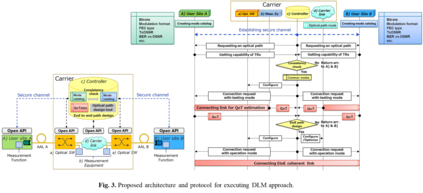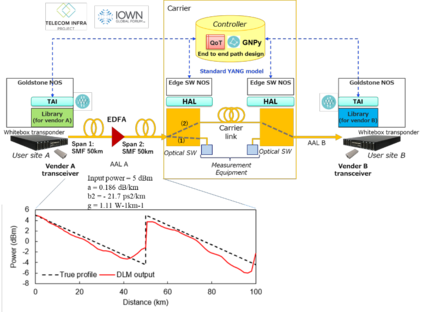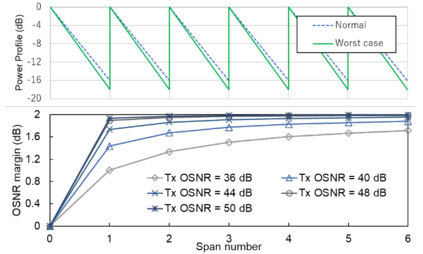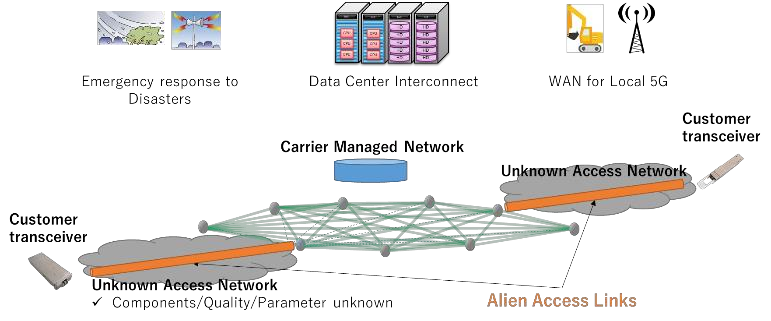With the spread of Data Center Interconnect (DCI) and local 5G, there is a growing need for dynamically established connections between customer locations through high-capacity optical links. However, link parameters such as signal power profile and amplifier gains are often unknown and have to be measured by experts, preventing dynamic path provisioning due to the time-consuming manual measurements. Although several techniques for estimating the unknown parameters of such alien access links have been proposed, no work has presented architecture and protocol that drive the estimation techniques to establish an optical path between the customer locations. Our study aims to automatically connect customer-owned transceivers via alien access links with optimal quality of transmission (QoT). We first propose an architecture and protocol for cooperative optical path design between a customer and carrier, utilizing a state-of-the-art technique for estimating link parameters. We then implement the proposed protocol in a software-defined network (SDN) controller and white-box transponders using an open API. The experiments demonstrate that the optical path is dynamically established via alien access links in 137 seconds from the transceiver's cold start. Lastly, we discuss the QoT accuracy obtained with this method and the remaining issues.
翻译:随着数据中心互联互通(DCI)和当地5G的扩展,越来越需要通过高容量光学连接,在客户地点之间建立动态的连接,然而,信号功率剖面和放大器增益等链接参数往往不为人所知,必须由专家加以测量,以防止因耗费时间的人工测量而提供动态路径。虽然提出了几种估算这种外来接入链接的未知参数的技术,但没有提出任何推动估算技术在客户地点之间建立光学路径的架构和协议。我们的研究的目的是通过外部接入连接自动连接客户拥有的收发器和最佳传输质量(QoT),我们首先提出客户和承运人之间合作光学路径设计的结构和协议,利用最新技术估算链接参数。我们随后在软件定义的网络(SDN)控制器和白箱转发器中采用开放的API执行拟议的协议。实验表明,光学路径是动态地通过从收发器冷机起起的137秒的外来访问链接建立的。我们首先讨论QOT准确性和剩余问题。









